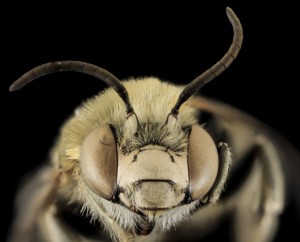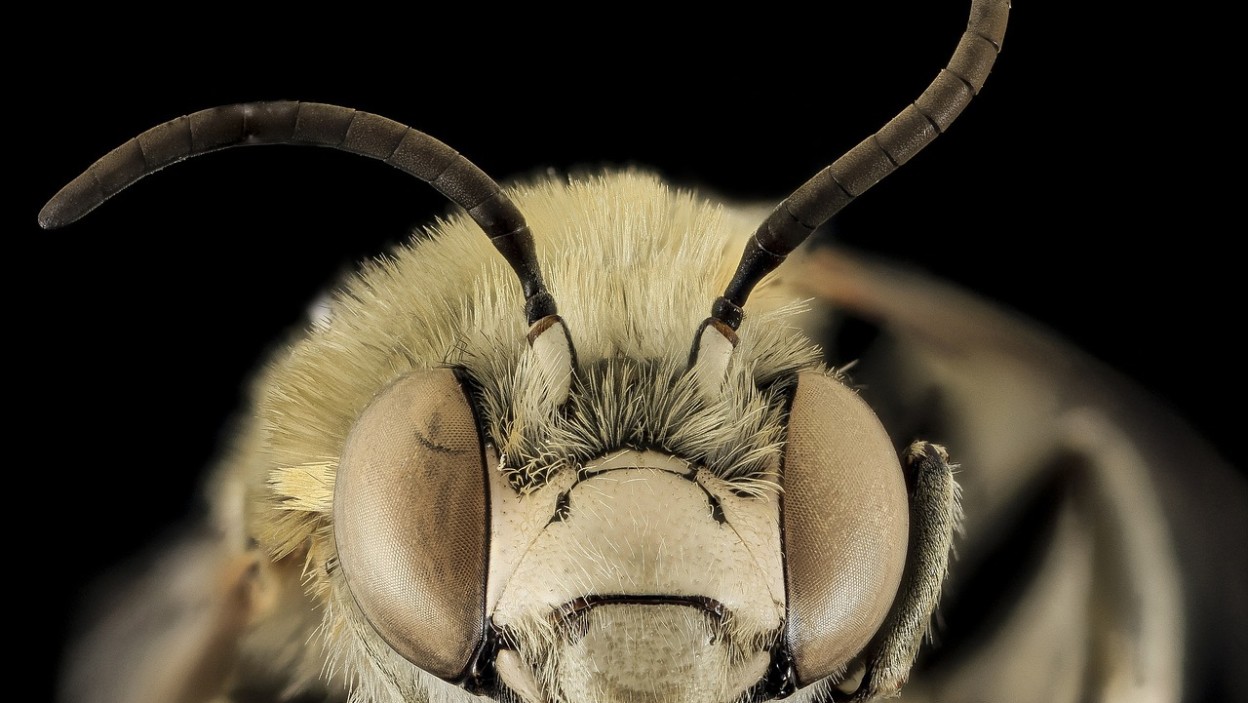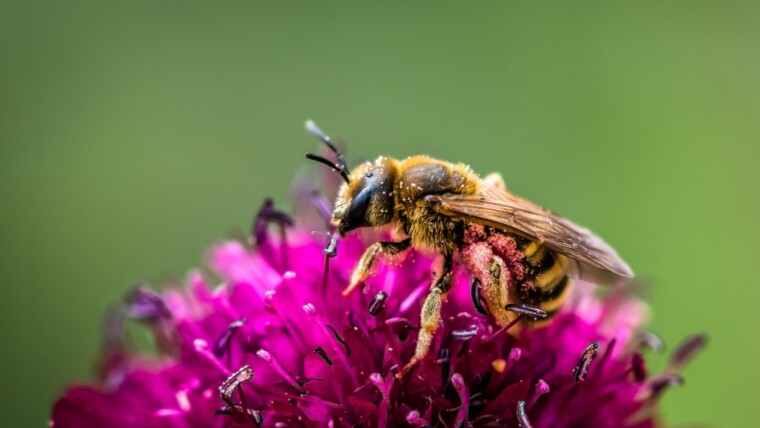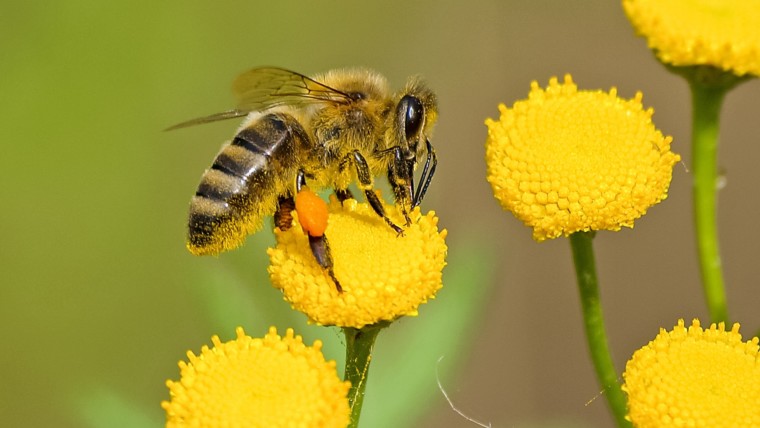Bee Sting – Honey bees generally sting to defend themselves or the colony as a whole. However the honey bee sting shows its effect quickly and needs to be removed wasting no time. If not done then it can be quite painful and in extreme cases, become life-threatening for people allergic to bee venom.
Symptoms of Honey Bee Sting:

Basically, the symptoms of honey bee stings depend on how much poison has gone inside the body. Normal reactions show up as itching and a degree of swelling but are likely to fade away after a certain period. Experiencing something more than normal reactions show signs such as honey bee sting swelling and redness on the area etc.
Being allergic to the venom can cause severe illnesses like infection, fainting, nausea, and death (at optimum level). It is to be noted that the criticalness of the reaction also increases when stung several times.
Treatments available for honey bee sting:
Honey bee stings treatment procedures for normal reactions include the following:
Remove stinger:
Use a credit card and scrape across the area to remove the stinger but never pinch the area. Pinching the area is liable to release more venom from the embedded stinger.
Don’t let the area swell:
First of all, remove jewelry (if any) from the sting site and then apply ice immediately in ten-minute intervals. It will prevent the area from swelling up.
Treat the symptoms:
Begin treating the symptoms using OTC painkillers but ask a doctor before giving it to anyone 18 years or younger.
Follow-Up:
Keep the area clean so that no honey bee sting infection shows up further.
Severe cases will require emergency honey bee sting treatment procedures immediately. When hospitalized, a doctor is likely to push injection to the patient namely epinephrine in external muscle of a patient’s thigh. The need for a second injection might be felt when there is no improvement.
In extreme cases wherein the patient stops breathing, a doctor opts for CPR (Cardiopulmonary Resuscitation) as honey bee sting treatment procedure. The technique might help in reviving the patient back to consciousness. But it is necessary to keep under proper control when faced with another attack. Even if it is necessary to report to the doctor about the patient’s reaction.
Knowing about honey bee venom:
Bee venom is actually the poison making honey bee sting painful. Don’t inter-relate venom with honey, pollen or jelly but is used to prepare the medicine. Here are some of the uses of bee venom:
Reducing allergic reactions from bee stings:
One of the possible uses of bee venom is it can reduce the level of reaction in individuals allergic to their stings. Immunotherapy provides nearly 98% guarantee in protecting individuals from bee stings. When the therapy is stopped, the probability of reaction lessens down to 5% in upcoming (5-10) years.
Arthritis:

Bee venom is thought to be useful to treat arthritis owing to the fact that it contains anti-inflammatory supplements. Although the technique is not proven yet some physicians in the US found great results to treat the pain along with arthritic conditions. Still, honey bee sting arthritis is not suggested for those who are allergic.
Additionally, bee venom is being used to treat multiple sclerosis, asthma, premenstrual syndrome, hearing loss, high BP, etc.
In order to avoid any bees from stinging you in your skin, you would need to be careful to not mess around with these bees! The important thing is to make sure that they do not perceive you to be a threat to them. Now, if you are not close to them chances are that they will not strike or sting you at all. So it is best to stay away from bees and wasps but it is not wholly possible. In such a situation you would need to know how to treat a bee sting and reduce the irritation and swelling.
Removing the stinger
Before you do that you will have to make sure that you carefully remove the stinger. Removing the stinger is not a difficult task but you need to do it carefully. If not done carefully then the stinger would remain inside your skin and cause further trouble for you and those around you! It could lead to all sorts of infection and even more pain and agony for you. So it is very important to have absolute knowledge of how to remove a bee stinger which we will be telling you about!
What is a bee stinger?
A bee stinger is that part of the bee’s body which it uses to sting anybody. It is probably the most dangerous and pointed part of a bee and it uses it to its fullest advantage. So you need to be careful not to be stung by a bee. No bee would sting you necessarily as it is a painful task for them as well. This is because when a bee stings you and injects toxins into your skin, it also detaches itself from the stinger. This is not at all an easy task for the bees. So they would not do it unless they feel that you are a serious threat to them! Here, we will tell you how to remove a bee stinger under the skin which is not that difficult a task once you know how to do it.
How to remove a bee stinger?

When you are stung by a bee, the first task you are supposed to do is to remove the stinger and also to wash the wounds as soon as you can. Next, you would know how to treat bee sting and then take care of it. But for now, let’s see how to remove a bee stinger from skin.
The first method you could try out is the credit card method. Here, you would need to get hold of a credit card which almost everybody has these days with them. Take the edge of the credit card and brush off some skin of the wound. Then get hold of the end of the stinger and push it out really hard. Hopefully, the stinger will hold on to the card and get removed.
Remove the stinger
The second method is to try a combination of remedy where you could remove the stinger as well as reduce the itching and swelling. You could try a household product known as onion. Onions are vegetables found at everybody’s homes and you should scrape off some onion on the wound. This would remove the stinger and reduce the pain.
The third method is something that everybody uses when they do not have anything on them. You could use your fingernails if they are long enough. Try getting hold of the end of the stinger and then push it out like you would have done with a credit card. Once that is done, remember to wash the wound and clean it.







Bee Sting Relief Effective Treatments and Quick Remedies
Beyond Honey: Surprising Solutions for Bee Sting Pain
The Importance of Quick Action: Treating Bee Stings at Home
Emergency First Aid for Bee Stings: A Step-by-Step Guide